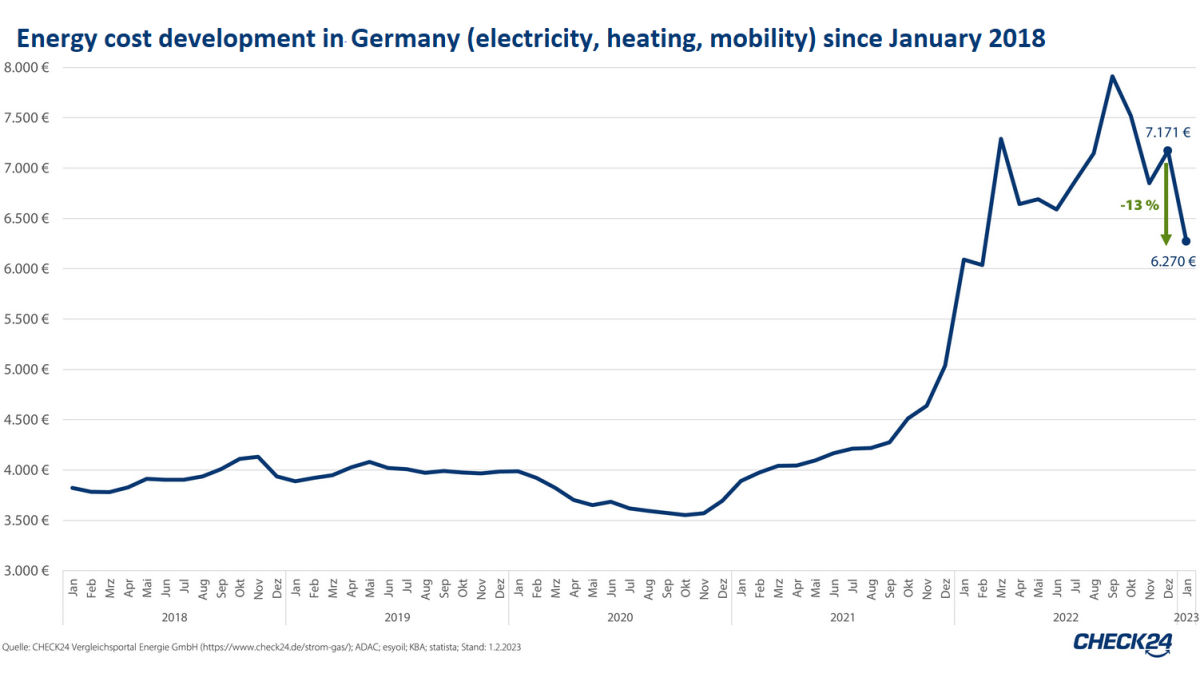Household energy prices in Germany continue to fall but remain high in early 2023
Clean Energy Wire
Energy prices for German households have dropped markedly in early 2023 but remain at a high level overall since the start of the energy crisis, price comparison website Check24 found in an analysis of price developments for electricity, gas and transport fuels. Prices for nearly all forms of household energy consumption continued to fall throughout January, sustaining a trend towards lower prices since the energy crisis peaked in early autumn last year. However, prices remained higher than in January 2022, before Russia’s invasion of Ukraine. Annual energy costs for an average household reached 6,270 euros in January 2023, 13 percent less than in the month before, but three percent more in a year-on-year comparison, even when including Germany’s subsidy package for heating and electricity costs. Heating prices dropped 22 percent compared to December 2022, while spot market prices for gas dropped 44 percent. Costs for electricity fell by two percent compared to the month before but remained eight percent above the price at the beginning of last year. However, the wholesale market price for electricity dropped 52 percent compared to the previous month. “There are a lot of new contracts offering tariffs below 40 cents per kilowatt hour,” Check24 executive Steffen Suttner said. This is cheaper than the tariffs covered by the government’s power price subsidy, which covers part of household electricity costs for tariffs above 40 ct/kWh. The costs of transport fuels in early 2023 on average were seven percent higher than one year before and three percent higher than at the end of 2022.
High prices due to the European energy crisis area burden to many households and companies, which the government has sought to alleviate through a so-called ‘defence shield’ worth 200 billion euros. A trend towards lower prices that set in around October 2022 has nurtured hopes that much less money will be needed to keep energy costs at levels consumers can cope with. However, observers warn that prices could stay high for the foreseeable future.


